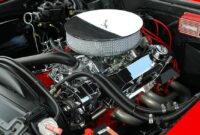How to Stop Condensation in Car – For many people, winter is an irritation season due to the humidity outside.
It can even be more frustrating when the same exact problem gets into your four-wheeled vehicle.
Condensation inside a car is not only blocking your vision,
but also requires a considerable amount of sum if you have no idea how to get it removed.
[divider style=”solid” top=”20″ bottom=”20″]
Condensation inside your car is a common problem, but there are a few things that you can do to reduce the amount of this unsightly substance.
Open containers can cause this, too. While you may think they will evaporate, they retain moisture that eventually condenses on the dashboard and glass of the vehicle.
So, how to stop condensation in car? Read on the following sections to find out the answer.
How to Stop Condensation in Car – Image Source: Pikist.com
Step-by-Step on How to Stop Condensation in Car
Follow the simple steps below to stop condensation inside your four-wheeled vehicles.
1. [highlight color=”orange”]Defrost and Make a Passage[/highlight]
The easiest way to maintain your car free from moisture is by turning on the defrost button.
It will turn on both of your air conditioning and heat systems.
The air conditioner will remove the moisture from the air inside the car,
and the heating system will make the interior part of the vehicle stay warm.
read also: Toyota Versus KIA | Which is the Best to Buy?
Condensation also often occurs during warm weather or sunny days.
Therefore, to keep your vehicle free from moisture, create a little passage by slightly open your windows while driving.
This way, the interior of the car will stay warm, and the humidity won’t be stuck inside it.
But make sure to not open the windows during the night as it will make the rear window foggy with dew.
- How to Fit a Car Battery – No Need to Call a Mechanic, Simple DIY
- How Often Should You Service Your Car to Ensure Good Maintenance
2. [highlight color=”orange”]Keep Everything Close During Rainy Days[/highlight]
The wet season is the worst season that may cause condensation inside four-wheeled vehicles.
Therefore, do not ever leave the sunroof or windows of your car open throughout those days.
It’s because rainy days will let humidity in and make the surfaces of the vehicle hazy.
Rainy days are closely related to an umbrella and wet shoes.
If you leave those damp things inside your car, it will definitely create condensation inside the vehicle.
You should remove all those sources of moisture in order to keep your windows clear.
Consider checking for any cooling system leak and other types of a leak from the windows, sunroof, and ventilation system.
Repair and tightly seal all those leaks because every wet thing inside the car will cause moisture which will transform into a fog.
stop condensation in a car – Image Source: pikist.com
[divider style=”solid” top=”20″ bottom=”20″]
3. [highlight color=”yellow”]Turn the Valve Off[/highlight]
If a car has an air conditioning system, then it certainly has a valve.
However, many car owners don’t even know about the location of their location.
You simply need to locate a switch that shows a C shape and an arrow.
In some vehicles, the controller features an arrow hits a person in the face.
The function of this button is to recycle the indoor air and re-circulate it.
In order to stop condensation, you need to turn it off to let the air in the outside flows into the car.
That’s how to stop condensation in car.
Before removing the moisture from your vehicle and use one of the simple steps above,
you need to know what triggers it in the very first place.
Whether it’s in the warm or cold season, both have the potential to create condensation inside the car.
Read more: How Much Does a Smart Car Weigh and Why Is It Crucial
[divider style=”solid” top=”20″ bottom=”20″]
Another Simple DIY to stop Condensation in a car:
To combat condensation, you can install a [highlight color=”yellow”]dehumidifier or a moisture absorber[/highlight]. If you’d rather not use these methods, you can also try airing the vehicle.
Remember that your heating vents should point towards the seats and carpets, so that the warm air can’t accumulate in the seat.
The most common cause of dampness inside a car is leaks. If your vents or seals are worn or damaged, the moisture can seep in.
[divider style=”solid” top=”20″ bottom=”20″]
Another culprit is dirty, wet clothes. After a rainy day, warm, moist air in your pockets and on your seat surfaces can condense.
The best way to [highlight color=”yellow”]remove the moisture from your car[/highlight] is to remove any items that could cause this condition. These items include coffee mugs and empty bottles of water.
These items can cause more condensation as the liquid remains on them, even on a hot day.






